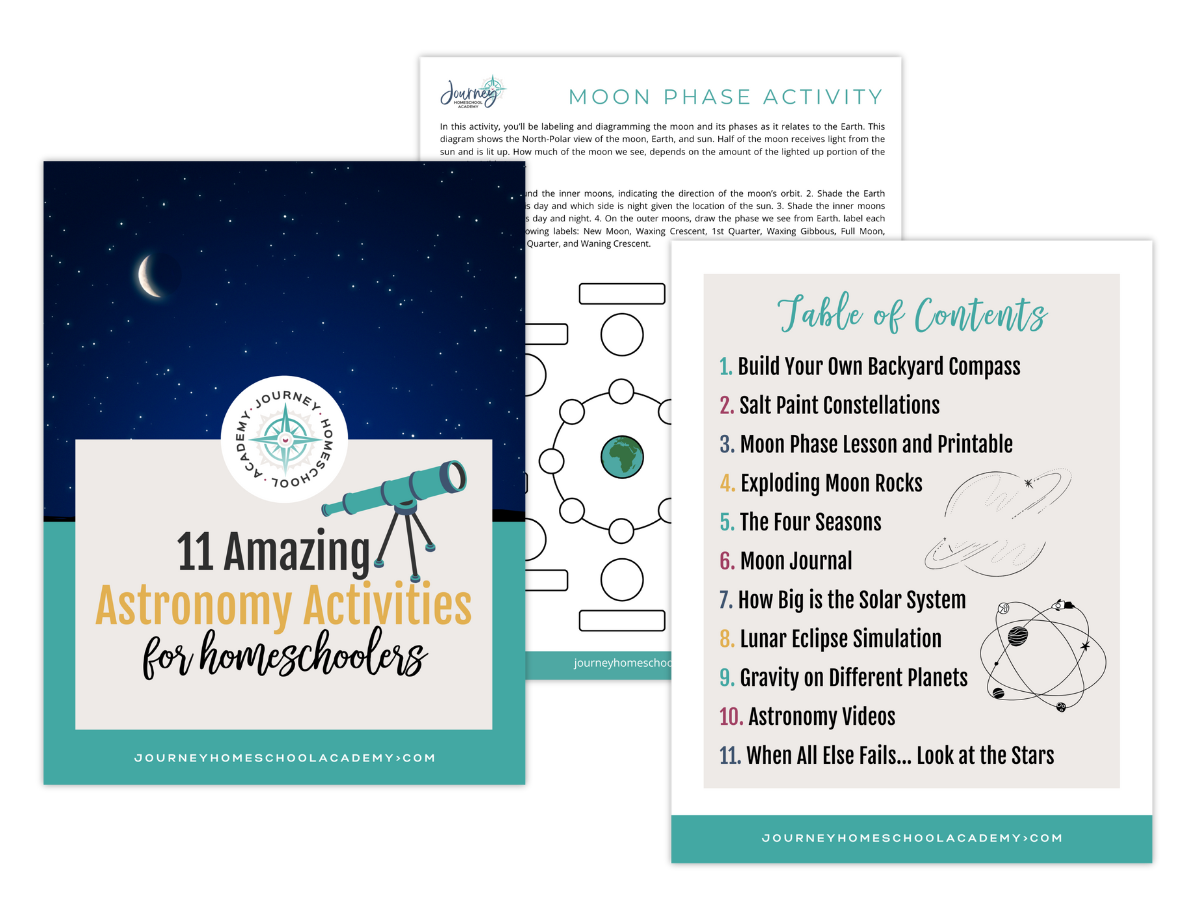
Astronomy Activities for Homeschoolers
Discover the wonders of space with these 11 hands-on activities!
You don’t need a telescope or a rocket ship to explore the universe—just a few simple supplies and a sense of curiosity! With our 11 Amazing Astronomy Activities for Homeschoolers guide, you and your child can bring the wonders of space to life right from your kitchen counter or backyard.
With this guide your child will…
- Build, experiment, create, and observe, all while discovering the fascinating science behind astronomy
- Recreate the vastness of the solar system using everyday objects to see just how far apart the planets really are
- Simulate moon phases and eclipses with simple tools to understand how astronomical objects interact in space.
- Get hands-on with gravity by testing how weight changes on different planets
- Watch chemistry and astronomy collide with an exciting, fizzing moon rock experiment
For those who love to create, this guide includes fun, artistic projects that bring the night sky indoors—like painting constellations with salt and watercolor or making a moon journal to track its changing shape each night. And when you’re ready to take the learning outside, you’ll find tips for stargazing with the naked eye, spotting planets, and identifying constellations that have guided explorers for centuries.
With these engaging, easy-to-follow activities, your child won’t just learn about space—they’ll experience it.

Ready to launch your child’s love for astronomy? Download the guide now and start exploring the universe from your own backyard!